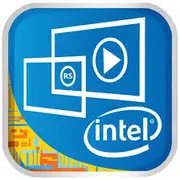Intel Core M-5Y10

インテル Core M-5Y10:モバイル性のための超ポータブルプロセッサ、パワーではなく
はじめに
インテル Core M-5Y10プロセッサは2014〜2015年に発売され、超低消費電力とパッシブ冷却により、その時代に革命をもたらしました。しかし、10年経った今でも、このプロセッサを搭載したデバイスは、コンパクトさとバッテリー寿命を重視する限られたユーザーにとって依然として魅力的です。本記事では、2025年にこのCPUがどのような人に適しているのか、現代のタスクにどれだけ対応できるのか、購入時に注意すべき点について考察します。
アーキテクチャとプロセス:ミニチュアの進化
Broadwellコア、14nm、2コアと4スレッド
Core M-5Y10は、14nmプロセスで構築されたBroadwellアーキテクチャ(第5世代インテルCore)に基づいています。これは、TDPが4.5Wのため、アクティブ冷却が不要な初の大衆向けCPUです。主要な仕様は以下の通りです:
- 2コア / 4スレッド(ハイパースレッディング対応)。
- ベースクロック:0.8GHz、ターボブーストで最大2.0GHz。
- L3キャッシュ:4MB — 2015年の時点でも控えめ。
- iGPU:インテル HDグラフィックス 5300(24 EU、クロック最大800MHz)。
アーキテクチャの特徴
- パッシブ冷却:ファンなしの設計により、10mm未満のノートブック(例えば、2015年のApple MacBook 12")が実現可能にしました。
- 省エネルギーモード:Speed ShiftおよびDynamic Tuning技術は、負荷に応じてパフォーマンスを最適化します。
消費電力とTDP:静かだが速くはない
TDP 4.5W:コンパクトさの代償
この非常に低い熱設計電力(現代のUシリーズに比べて3〜5倍小さい)は以下を意味します:
- クーラーなしでの動作が可能。
- ピーク性能の制限:長時間の負荷時にクロックが1.2〜1.5GHzに低下します。
熱的制約
2025年でも、Core M-5Y10を搭載したノートブックはサーマルスロットリングに悩まされます。例えば、HandBrakeでのビデオ変換中はプロセッサがすぐにクロックを下げ、現代のCore i3と比較してタスクの所要時間が2〜3倍になります。
パフォーマンス:2025年の控えめな結果
オフィスワークとウェブブラウジング
- Geekbench 6:687(シングルコア)/ 1326(マルチコア) — Snapdragon 8cx Gen 2(2020年)と同レベル。
- 実際のタスク:
- Chromeで10タブ + Word + Zoomの同時使用:時折のラグが発生。
- 4K YouTube:VP9のハードウェアデコードなしでは、カクツキが生じます。
マルチメディアとゲーム
- ビデオ編集:1080p(DaVinci Resolve)での軽い編集のみで、強いラグが発生。
- ゲーム:
- CS:GO — 低設定(720p)で20〜25FPS。
- Minecraft — 30FPS(レンダーディスタンス8チャンク)。
- 現代のゲーム(例えば、Genshin Impact)は起動できません。
Turbo Boost:短期間の急上昇
短期間の負荷(アプリケーションの起動時)でクロックは2.0GHzに上昇しますが、10〜15秒後には1.2〜1.5GHzに低下します。
使用シナリオ:2025年にCore M-5Y10が役立つのは誰か?
1. 超ポータブルデバイス:
- キーボード付きタブレット(例えば、Microsoft Surface Pro 4)。
- 出張用ノートブック(1kg未満:Lenovo Yoga 3 Pro)。
2. 副次的なタスク:
- ドキュメントや電子メールの作成。
- 1080pでの映画視聴。
3. オフィスキオスクや端末:中古デバイスの低価格($100から)。
合わない人:
- レンダリングやプログラミングを必要とする学生。
- ゲーマー。
- グラフィック作業を行うフリーランサー。
バッテリー寿命:8〜10時間は神話か現実か?
2025年のバッテリー
新しいバッテリー(40〜50Whに交換)でも、アクティブ使用時の稼働時間は6〜7時間を超えることはありません(Chrome + Slack)。理由は、古いプロセス技術によるもので、14nm対5〜7nmの現代チップです。
省エネルギー技術
- インテル SpeedStep:動的なクロック調整。
- Cステート:未使用コアの無効化。
- ディスプレイの電力節約:明るさとマトリックスのクロックを低下。
アドバイス:OSの設定で「バッテリー節約モード」を選択することで、バッテリー寿命を15〜20%延ばすことが可能です。
競合他社との比較:Apple、AMDおよび現代のインテルに対して
1. Apple M1(2020年):
- シングルスレッドパフォーマンスが3倍。
- TDP 10W、しかしMacBook Airのバッテリー寿命は最大18時間。
2. AMD Ryzen 3 7320U(2022年):
- 4コア / 8スレッド、Zen 2、6W TDP。
- Geekbench 6マルチコア:〜3200。
3. インテル N100(2023年):
- 4コア、6W TDP、AV1デコード対応。
- $200〜300でパフォーマンスが2倍。
結論:Core M-5Y10は、予算セグメントでさえも時代遅れです。その利点は、超安価な中古デバイス($100から)です。
長所と短所:2025年に警戒が必要な理由
長所:
- 無音性(ファンなし)。
- コンパクトなデバイス。
- 中古市場での低価格。
短所:
- 現代のOSに対して貧弱なパフォーマンス(Windows 11は最低4GBのRAMと64GBのストレージを要求するが、Core M-5Y10では遅延が発生)。
- 現代コーデック(AV1、VP9)のサポートがない。
- 限られたアップグレード:RAMとSSDがしばしばハンダ付けされている。
ノートパソコン選びの推奨:Core M-5Y10の代わりに何を買うべきか?
予算300ドルまで:
- 新しいデバイス:Chuwi Gemibook Pro(インテル N100、8GB RAM、$279)。
- 中古 MacBook Air M1:$400から(しかし信頼性が高く、パワフル)。
購入時のアドバイス:
1. 256GB以上のSSDを選びましょう:古いモデルのeMMCストレージは信頼性が低いです。
2. ポートを確認:充電に対応したUSB-Cがあれば便利です。
3. 解像度1920x1080未満の画面は避けましょう。
最終結論:ミニマリストのための狭いニッチ
2025年において、インテル Core M-5Y10は次のような用途にのみ適しています:
- 短い旅行用のセカンドノートパソコンとして。
- 安価なデバイスが必要な高齢者ユーザー向け(Skypeやニュースを読むため)。
- ウルトラブックのコレクションを集めるレトロ技術の愛好者向け。
主な利点:
- メンテナンスが不要(冷却ファンにホコリがたまらない)。
- 現代のノートパソコンのほとんどよりも軽い。
代替:予算が許すなら、インテル N100、AMD Mendocino、またはApple M1を搭載したデバイスを選ぶ方が良いでしょう。それらは2030年までの適用性を維持します。
結論
Core M-5Y10はウルトラポータブル性の象徴ですが、2025年には予算型の新製品にも劣ります。厳しい予算があるか、コレクターとしての興味がある場合を除いて、購入する価値はありません。日常的なタスクには、より現代的な解決策を探すべきです。
基本
CPUの仕様
メモリ仕様
GPUの仕様
その他
ベンチマーク
他のCPUとの比較
ソーシャルメディアで共有する
または当サイトへのリンクを追加
<a href="https://cputronic.com/ja/cpu/intel-core-m-5y10" target="_blank">Intel Core M-5Y10</a>